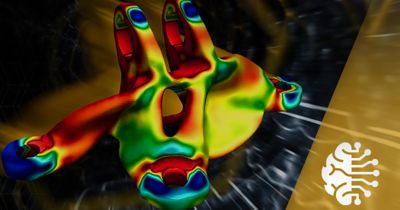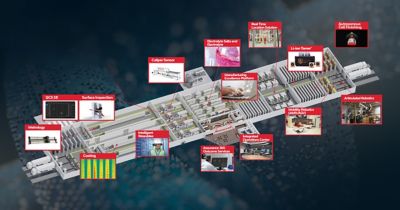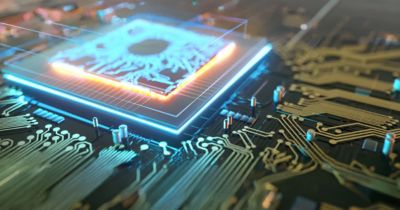-
United States -
United Kingdom -
India -
France -
Deutschland -
Italia -
日本 -
대한민국 -
中国 -
台灣
-
Ansys is committed to setting today's students up for success, by providing free simulation engineering software to students.
-
Ansys is committed to setting today's students up for success, by providing free simulation engineering software to students.
-
Ansys is committed to setting today's students up for success, by providing free simulation engineering software to students.
-
Contact Us -
Careers -
Students and Academic -
For United States and Canada
+1 844.462.6797

Simulation has steadily become faster and more accessible, but with the addition of artificial intelligence (AI), that steady progress takes a great leap forward. The predictive power of simulation, which enables engineers to revolutionize how we understand phenomena we can’t even see, is supercharged by AI. In turn, simulation data is being used to accelerate the pace of AI training.
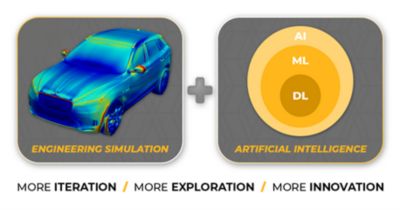
Combining artificial intelligence (AI) and simulation promises amazing benefits for engineering.
Simulations can use AI techniques to run models faster and easier. The more AI is trained, the faster and more accurate those simulations become. Providing enough good data to properly train AI models has been a significant challenge. Simulation data helps solve that challenge. AI can be trained using simulation data from a variety of industries and applications. It’s an upward spiral that results in faster, easier to use, more comprehensive, and continually improving workflows.
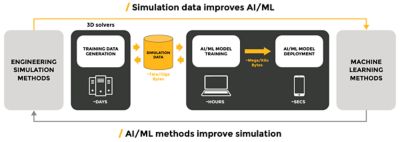
How AI/machine learning and simulation work together: Ansys is combining the power of AI and simulation to provide groundbreaking technology through many AI products and platforms.
Accelerating the Science of Innovation
So how can we train AI to ensure that it really does what we need it to do? Simulation data is full of information that can be used to inform AI across disciplines. Real data is pulled from past simulations and fed into an AI model, thus creating a starting point for further advancements.
An important enhancement in data-driven training of AI is the reduced-order modeling (ROM) approach that Ansys uses to speed up many types of simulations. Essentially, ROMs are simplifications of complex models that capture the behavior of source models, allowing engineers and designers to use minimal computational resources when examining a system’s principal properties. ROMs have become a staple for industries that demand high-quality end products with shorter design life cycles.
In addition to ROMs, AI large-language models (LLMs) allow further training of automatically generated solutions. LLMs give engineers the ability to write a statement requesting a desired outcome, which then automatically generates results. This sort of AI training gives experts the power to obtain outcomes beyond what the human mind might think of or consider on its own.
Quickly obtaining complex results is undoubtedly a central feature of AI, so much so that anyone using it has the possibility of becoming too reliant on its capabilities. How can we, as pioneering engineers in the field of AI, ensure that our findings are properly informed and accurate? It is important to know that AI is not perfect. It can pull from thousands of resources, some of which may be unreliable, proprietary, or legally protected. To guarantee that data generated by simulation is truthful and as accurate as possible, explainable AI (XAI) and human monitoring are crucial to the functionality of AI in any field. XAI uses processes and methods that can be applied to a system, allowing human users to understand and trust results from AI algorithms.
Transforming Simulation at the Speed of AI
Ansys continues to work on advancing technology through its AI platforms. The iterative engineering process enabled by AI and simulation enables engineers to improve their designs with far fewer constraints. As you’ll see in the latest Ansys Advantage magazine, engineers are already leveraging the power of AI to generate reliable simulations across many industries, including aerospace, automotive, electronics, optics, and healthcare. Combining AI and simulation makes data actionable, continuously improving the iterative engineering process to advance designs with fewer constraints.
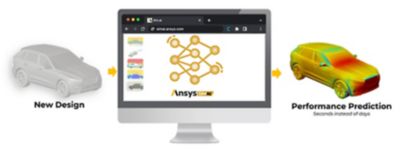
The Ansys SimAI cloud-enabled generative AI platform uses past data to predict performance of new designs.
The Ansys SimAI cloud-enabled generative AI platform and Ansys Twin Builder simulation-based digital twin platform are just two of our innovative AI solutions that harness the power of AI/ML combined with simulation. SimAI software enables you to rapidly test design alternatives — around 10x to 100x more — without the constraints of traditional solvers across all design phases. It makes simulation accessible to designers and non-experts. Ansys TwinAI software is a digital twin solution that integrates the accuracy of physics models with insights from real-world data, powered by AI techniques.
Many of the Ansys products you already use can also be augmented with AI. We call these AI+ add-ons. They employ a rich set of machine learning capabilities across various physics to deliver more accurate results, capture more details, and make our solutions even easier to use.
Finally, AnsysGPT is your AI-driven virtual assistant that uses AI and the Ansys support documentation training to answer your questions in many languages, with links to the source materials.
We hope you enjoy the latest issue of Ansys Advantage magazine. As you’ll see, the possibilities are endless when artificial intelligence and powerful simulation tools are brought together.
Just for you. We have some additional resources you may enjoy.
“Engineers are already leveraging the power of AI to generate reliable simulations across many industries, including aerospace, automotive, electronics, optics, and healthcare.”
— Prith Banerjee, Chief Technology Officer, Ansys
The Advantage Blog
The Ansys Advantage blog, featuring contributions from Ansys and other technology experts, keeps you updated on how Ansys simulation is powering innovation that drives human advancement.












